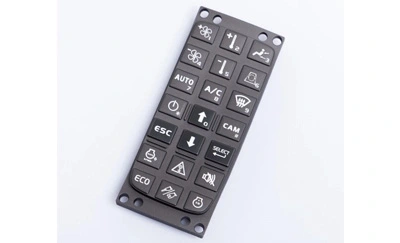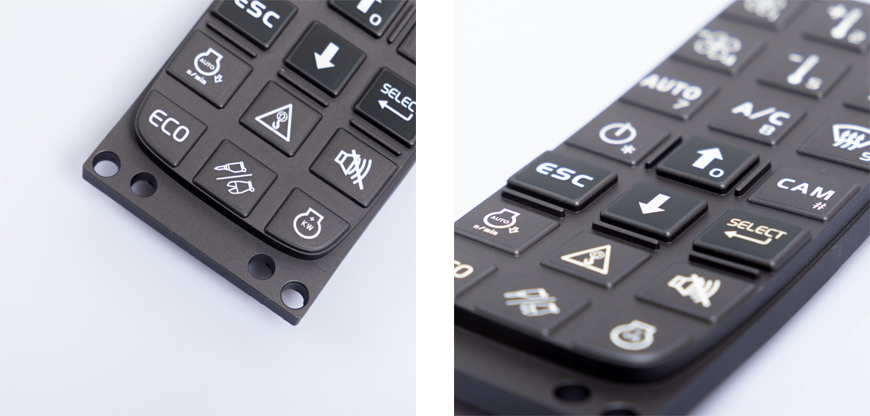
In today's digital age, LCD membrane switches play a crucial role in various industries, from consumer electronics to industrial machinery. These switches are not just about the buttons you press on your remote control or microwave; they are integral components that enable the functionality of many devices. To understand the significance of LCD membrane switch adhesive factories, we need to delve into their production processes and the vital role they play in ensuring these switches function flawlessly.

Understanding LCD Membrane Switches
The Role of Adhesives in LCD Membrane Switches
Quality Control in Adhesive Application
The LCD Membrane Switch Adhesive Factory
Materials Used in the Production
The Manufacturing Process
Precision and Cutting Techniques
Printing and Overlay Integration
Testing and Quality Assurance
Benefits of Opting for a Specialized Factory
The Importance of Customization
Industry Applications
Future Trends in LCD Membrane Switch Technology
Maintaining and Repairing Membrane Switches
Conclusion
LCD membrane switches are user interface components consisting of multiple layers, including graphic overlays, conductive circuits, and adhesive layers. These switches are known for their durability, flexibility, and sleek design, making them ideal for various applications.
Adhesives are the unsung heroes of LCD membrane switches. They are responsible for bonding the various layers together, ensuring that the switch functions smoothly and reliably. The choice of adhesive and its application process significantly impact the switch's performance.Quality Control in Adhesive Application
Manufacturers understand the critical role of adhesives and employ rigorous quality control measures to guarantee consistent and reliable adhesion. Quality checks include adhesive thickness, uniformity, and resistance to environmental factors.
LCD membrane switch adhesive factories are specialized facilities dedicated to the production of these crucial components. These factories utilize state-of-the-art technology and expertise to ensure the highest quality switches.
The materials used in LCD membrane switches are carefully selected to meet specific requirements. High-quality graphic overlays, conductive inks, and adhesives are essential components of a reliable switch.
The production process involves precise cutting, printing, and overlay integration. Each step is executed with meticulous attention to detail to ensure the final product meets or exceeds industry standards.
Cutting techniques such as laser cutting and die-cutting are employed to create intricate designs and shapes in the graphic overlays and adhesive layers.
Graphics and text are printed onto the overlay layer, giving the switch its unique appearance. Overlay integration ensures that the graphics align perfectly with the conductive circuits.
Before leaving the factory, each membrane switch undergoes rigorous testing to verify functionality and durability. These tests include actuation force, electrical continuity, and resistance to environmental factors like moisture and temperature.
Choosing a specialized LCD membrane switch adhesive factory offers several advantages, including access to expertise, cutting-edge technology, and the assurance of high-quality products.
Customization is key in meeting the unique requirements of different industries. Specialized factories can tailor the design and specifications of membrane switches to suit specific applications.
LCD membrane switches find applications in various industries, including medical devices, automotive, aerospace, and consumer electronics, showcasing their versatility and adaptability.
As technology advances, we can expect further innovations in LCD membrane switches, including enhanced durability, improved touch sensitivity, and integration with IoT devices.
Proper maintenance and occasional repairs can extend the lifespan of LCD membrane switches, reducing downtime and replacement costs.
LCD membrane switch adhesive factories are the backbone of modern technology, enabling the production of reliable and durable user interfaces. Their role in various industries cannot be overstated, and as technology continues to evolve, we can expect even more exciting developments in this field.
What are LCD membrane switches used for?
LCD membrane switches are used in a wide range of applications, from industrial machinery control panels to medical devices and consumer electronics.
How are adhesives applied to membrane switches?
Adhesives are applied using precise techniques to ensure even distribution and reliable bonding between layers.
Can membrane switches be customized for specific needs?
Yes, specialized factories offer customization options to tailor membrane switches to the unique requirements of different industries.
What is the future of LCD membrane switch technology?
The future holds promising advancements, including improved durability and integration with emerging technologies like IoT.
How can I maintain and repair membrane switches?
Proper maintenance and occasional repairs can be done by following manufacturer guidelines and consulting with experts when necessary.